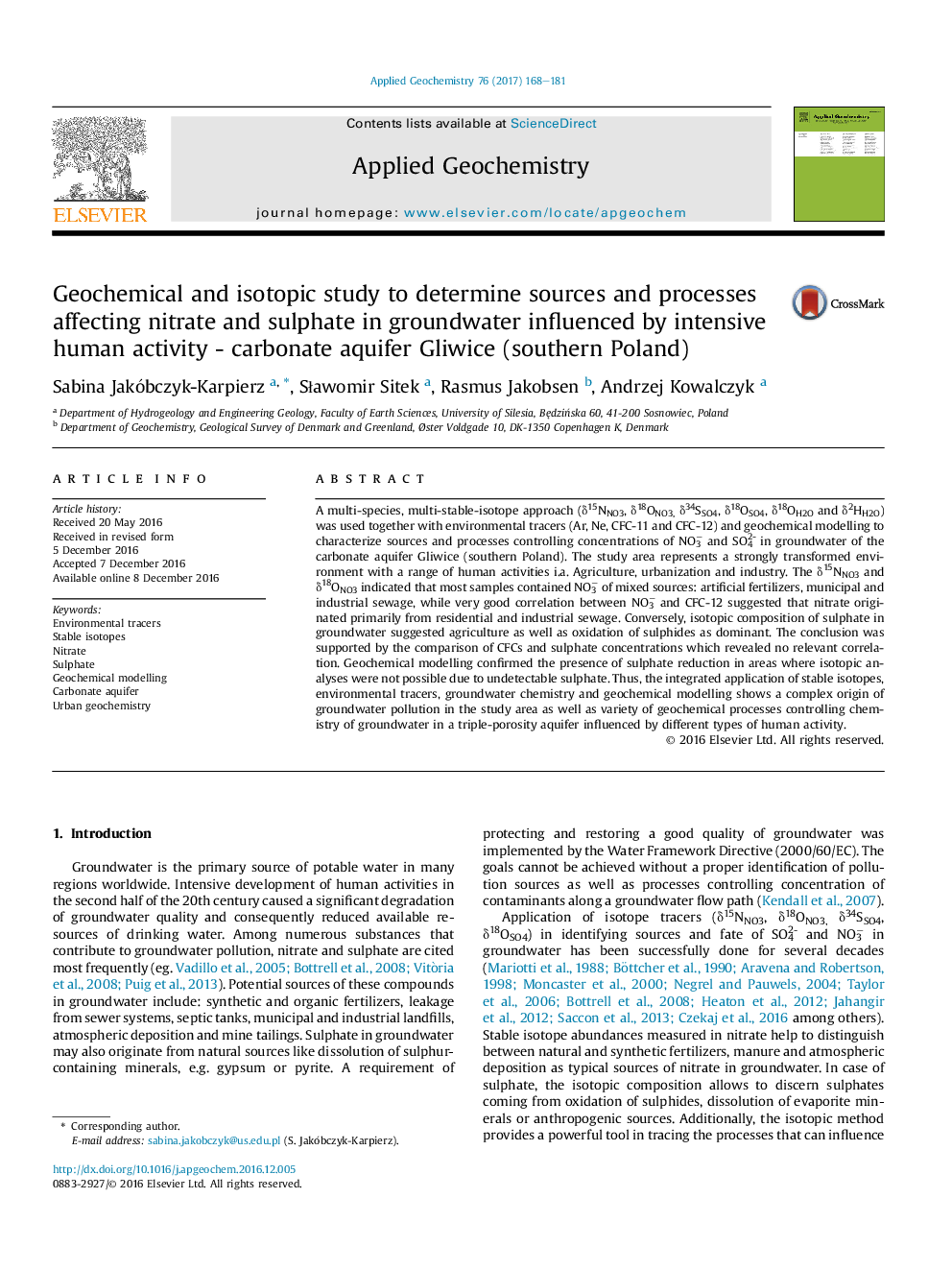| Article ID | Journal | Published Year | Pages | File Type |
|---|---|---|---|---|
| 5752627 | Applied Geochemistry | 2017 | 14 Pages |
Abstract
A multi-species, multi-stable-isotope approach (δ15NNO3, δ18ONO3, δ34SSO4, δ18OSO4, δ18OH2O and δ2HH2O) was used together with environmental tracers (Ar, Ne, CFC-11 and CFC-12) and geochemical modelling to characterize sources and processes controlling concentrations of NO3â and SO42- in groundwater of the carbonate aquifer Gliwice (southern Poland). The study area represents a strongly transformed environment with a range of human activities i.a. Agriculture, urbanization and industry. The δ15NNO3 and δ18ONO3 indicated that most samples contained NO3â of mixed sources: artificial fertilizers, municipal and industrial sewage, while very good correlation between NO3â and CFC-12 suggested that nitrate originated primarily from residential and industrial sewage. Conversely, isotopic composition of sulphate in groundwater suggested agriculture as well as oxidation of sulphides as dominant. The conclusion was supported by the comparison of CFCs and sulphate concentrations which revealed no relevant correlation. Geochemical modelling confirmed the presence of sulphate reduction in areas where isotopic analyses were not possible due to undetectable sulphate. Thus, the integrated application of stable isotopes, environmental tracers, groundwater chemistry and geochemical modelling shows a complex origin of groundwater pollution in the study area as well as variety of geochemical processes controlling chemistry of groundwater in a triple-porosity aquifer influenced by different types of human activity.
Keywords
Related Topics
Physical Sciences and Engineering
Earth and Planetary Sciences
Geochemistry and Petrology
Authors
Sabina Jakóbczyk-Karpierz, SÅawomir Sitek, Rasmus Jakobsen, Andrzej Kowalczyk,
